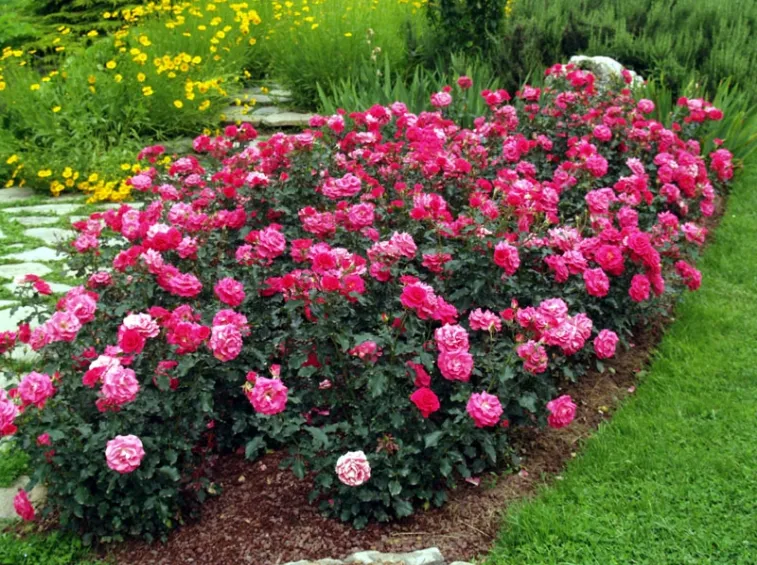Re-flowering ground cover roses
Ground cover roses
Concerning urban greenery and for the creation of low-management flower beds and borders, re-flowering ground cover roses represent a real resource for the gardener and for the green designer. In fact, these roses do not require difficult management and are among the most severe ones; rustic that there are. Ground coverings do not require a large number of interventions and care when compared with other roses and immediately give appreciable results when placed in the ground. L’ covering effect that these roses give, which then è l’ più aspect; appreciated of this varietyà of roses, è immediate and a few months are enough to have flower beds or borders full of ground cover roses. Many of these ground cover roses are remontant and are able to give splendid flowers from the first months of spring until late autumn. There are remontant roses of practically all colors and various shades of the main colors can also be appreciated. Ground coverings are almost always small in size and cover the ground and are therefore ideal for decorating garden corners to which we cannot devote much time. Finally, ground coverings are widely used in urban greenery, again thanks to their rusticity; and to the facilityà with which they survive and flourish even in quite stressful environments.
Planting of ground cover roses
If you want to plant ground cover roses, there are some practices to follow to get excellent results. First of all, one thing that should be done but which is now for reasons of time and practicality; no longer comesù made è open the hole a few days earlier, at least 7-8 days earlier, compared to the day of planting the rose. Dig the hole a bit’ before planting it allows us to revitalize the soil più deep and to increase fertilityà of the land that will goà to welcome the rose. The hole will have to be 26-agrave; be at least 1.5-2 times wider than the earthen bread of the rose. That said, before planting a ground cover rose è well create a 2-finger layer of gravel or other draining material, at the bottom of the hole, to increase drainage and reduce water stagnation around the earthen bread of our rose. Over the drainage layer we spread a layer of soil for gardening to which we also add organic fertilizer. L’ ideal would be to put some pelleted organic fertilizer and mix it with the soil, to increase fertility; of the substrate. If there is still no soil, we fill the hole with normal soil after which we press the added earth well with the foot and arrange the rose so that it is straight. If we want to plant bare-root ground cover roses, remember that this operation must be performed during periods of vegetative rest. Many rose aficionados argue that planting bare-root roses gives better results than planting seedlings with earthen bread but this operation &is’ certainly very complex and requires a bit’ of experience in più ;.
Pruning ground cover roses
The pruning of ground cover roses è one of the più rose prunings; simple to make. Before the vegetative restart, in fact, the dry and diseased branches of the roses must be eliminated, also trying to give a general containment to the volume of the plants. The pruning of ground cover roses shouldà aiming on the one hand to give new vigor to the seedlings by eliminating the old branches and furthermore it will have to; give a shape to the plants, both from an aesthetic and order point of view. Therefore, excess branches, those that are too long or those too large, will also be eliminated, greatly reducing the size of the roses.


